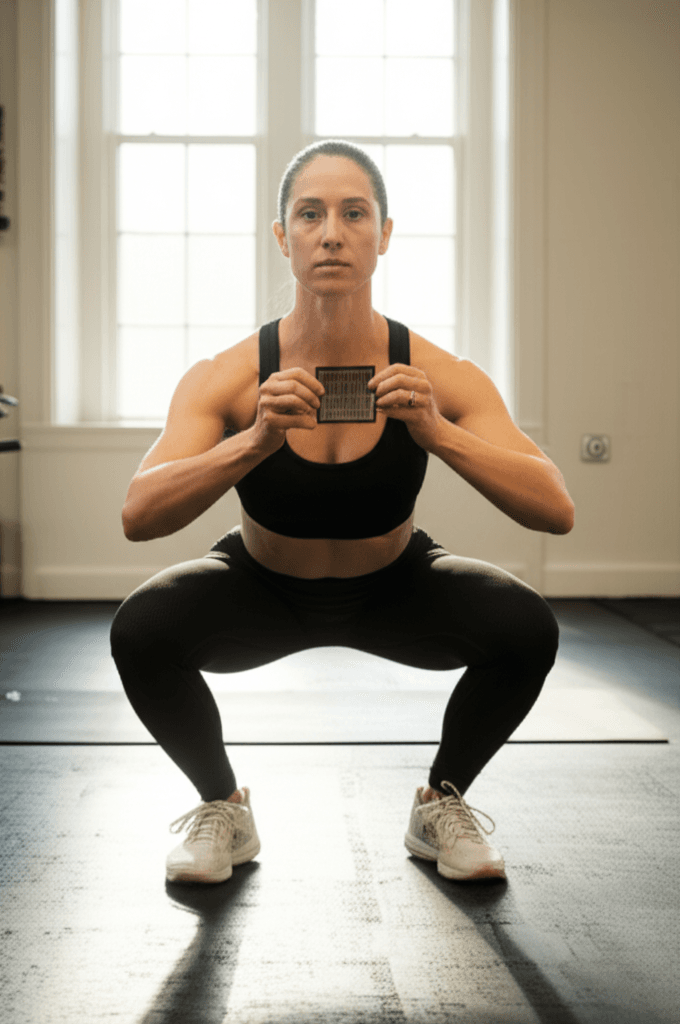Menopause brings many changes, and weight gain, particularly around the abdomen, is a common concern. The good news? You can fight back! Incorporating specific exercises into your routine can help you build a body that supports you through every stage of life. Forget fad diets and embrace these five trainer-approved exercises designed to combat menopausal weight gain, boost your metabolism, and improve your overall well-being.
Understanding Menopausal Weight Gain
Menopause, typically occurring in a woman’s late 40s or early 50s, marks the end of menstruation and a significant shift in hormone levels. This hormonal change can lead to a cascade of effects, including:
- Decreased Estrogen: Lower estrogen levels can affect metabolism, making it easier to gain weight and harder to lose it. It also messes with insulin resistance and increases fatigue.
- Muscle Mass Loss: As we age, we naturally lose muscle mass, which slows down our metabolism. Because muscle burns more calories than fat, a decrease in muscle mass makes it harder to maintain a healthy weight.
- Increased Cortisol: Menopause can be a stressful time, leading to increased cortisol levels. Cortisol promotes fat storage, especially around the abdomen.
- Changes in Hunger Hormones: Fluctuations in hormones like ghrelin (which increases appetite) can lead to increased cravings and overeating.
Why Exercise is Key
While hormonal changes play a significant role, exercise can counteract many of the negative effects of menopause. Regular physical activity offers a multitude of benefits:
- Boosts Metabolism: Exercise, especially strength training, helps build and maintain muscle mass, which increases your resting metabolism, allowing you to burn more calories even when you’re not working out.
- Burns Calories: Both aerobic and strength training exercises burn calories, helping you create a calorie deficit needed for weight loss.
- Reduces Stress: Exercise is a natural stress reliever, helping to lower cortisol levels and improve mood.
- Improves Sleep: Regular physical activity can promote better sleep, which is essential for managing weight and overall health.
- Strengthens Bones: Weight-bearing exercises help maintain bone density, reducing the risk of osteoporosis, a common concern for postmenopausal women.
- Reduces risk of chronic diseases: Strength training improves insulin sensitivity and lowers blood pressure.
5 Trainer-Approved Exercises to Fight Menopausal Weight Gain
Here are five types of exercises that will assist in managing menopausal weight gain:
1. Strength Training: Your Metabolic Booster
- Why it Works: Strength training is non-negotiable for women wanting to lose weight and change their body shape. It is the most efficient method for increasing muscle mass and metabolic rate. Regular, consistent weight resistance exercise is the key.
- How to Do It: Aim for at least two to three strength training sessions per week, focusing on major muscle groups (legs, back, chest, shoulders, arms). Use a weight that challenges you – you should be able to complete the exercise with good form but feel fatigued by the last repetition.
- Exercises to Try:
- Squats: Targets legs and glutes. Mimics sitting into a chair. Perform bodyweight squats or goblet squats with a dumbbell.
- Deadlifts: Works multiple muscle groups simultaneously, including back, legs, and core.
- Lunges: Great for legs and balance.
- Push-ups: Strengthens chest, shoulders, and triceps.
- Dumbbell Rows: Targets back and biceps.
2. High-Intensity Interval Training (HIIT): Burn Fat Fast
- Why it Works: HIIT involves short bursts of intense exercise followed by brief recovery periods. This type of training is incredibly effective for burning calories and boosting metabolism in a short amount of time.
- How to Do It: Choose an activity you enjoy, such as running, cycling, or swimming. Alternate between high-intensity intervals (e.g., sprinting for 30 seconds) and low-intensity recovery periods (e.g., walking for 60 seconds). Aim for 20-30 minutes of HIIT two to three times per week.
- Exercises to Try:
- Sprinting: Alternate between sprinting and walking.
- Cycling: Alternate between high-resistance cycling and easy cycling.
- Burpees: A full-body exercise that combines a squat, push-up, and jump.
- Jumping Jacks: A classic cardio exercise.
3. Cardio (Aerobic Exercise): Heart Health and Calorie Burn
- Why it Works: Cardiovascular exercise is essential for burning calories, improving heart health, and boosting overall fitness.
- How to Do It: Aim for at least 150 minutes of moderate-intensity aerobic activity per week, such as brisk walking, jogging, cycling, swimming, or dancing.
- Exercises to Try:
- Brisk Walking: An easy and accessible exercise that can be done anywhere.
- Jogging/Running: A great way to burn calories and improve cardiovascular health.
- Cycling: A low-impact exercise that’s easy on the joints.
- Swimming: A full-body workout that’s gentle on the body.
- Dancing: A fun and engaging way to get your heart rate up.
4. Core Workouts: Tone Your Midsection
- Why it Works: Core exercises strengthen the muscles around your abdomen, helping to improve posture, stability, and reduce the appearance of menopausal belly fat.
- How to Do It: Incorporate core exercises into your routine two to three times per week.
- Exercises to Try:
- Planks: A static exercise that engages all core muscles.
- Crunches: A classic abdominal exercise.
- Leg Raises: Works the lower abs.
- Russian Twists: Targets the obliques.
- Bird Dog: Improves core stability and balance.
5. Flexibility and Balance Exercises: Stay Mobile and Prevent Falls
- Why it Works: Flexibility and balance exercises help improve range of motion, prevent injuries, and reduce the risk of falls, which is especially important as we age.
- How to Do It: Incorporate stretching, yoga, or Tai Chi into your routine several times per week.
- Exercises to Try:
- Yoga: Improves flexibility, strength, and balance.
- Tai Chi: A gentle exercise that promotes balance and coordination.
- Stretching: Focus on stretching major muscle groups, holding each stretch for 20-30 seconds.
Sample Workout Plan
Here’s a sample weekly workout plan incorporating these five types of exercises:
- Monday: Strength Training (legs and core)
- Tuesday: Cardio (30 minutes of brisk walking or jogging)
- Wednesday: Rest or active recovery (yoga or stretching)
- Thursday: Strength Training (upper body)
- Friday: HIIT (20 minutes)
- Saturday: Cardio (swimming or cycling)
- Sunday: Rest
Additional Tips for Success
- Consistency is Key: Aim to exercise most days of the week for optimal results.
- Listen to Your Body: Don’t push yourself too hard, especially when starting a new exercise program.
- Stay Hydrated: Drink plenty of water before, during, and after exercise.
- Warm-up and Cool-down: Always warm up before exercise and cool down afterward to prevent injuries.
- Find a Workout Buddy: Exercising with a friend can help you stay motivated and accountable.
- Consult a Professional: If you have any underlying health conditions, consult with a doctor or certified personal trainer before starting a new exercise program.
- Healthy Diet: Combine exercise with a balanced diet rich in fruits, vegetables, lean protein, and whole grains for optimal results.
- Reduce Stress: Practice stress-reducing techniques such as meditation or deep breathing exercises.
- Get Enough Sleep: Aim for 7-8 hours of sleep per night.
Building a Body for Life
Menopause is a natural transition, and while it may bring challenges, it’s also an opportunity to prioritize your health and well-being. By incorporating these five trainer-approved exercises into your routine, you can fight menopausal weight gain, boost your metabolism, and build a body that supports you through every stage of life. Remember to listen to your body, stay consistent, and enjoy the process of becoming stronger and healthier.







